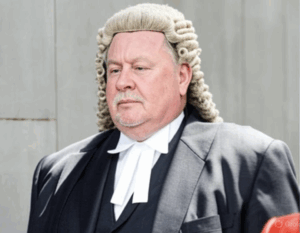Andrew L. Urban
Too many unsafe convictions have put innocents behind bars. Our deformed criminal justice system must be reformed. Following on from our most recent posts examining various ongoing flaws and weaknesses in Australia’s criminal justice system (see * below) – and those who profess to serve it – we are dismayed to report that neither law reform commissions nor political parties have any plans or policies to address reforms in needed areas. And what are those areas?
Previously:
* Bad law & judges with poor judgement
* Prosecutors hunting for convictions
* To correct atrocities of the law relieve politicians of the burden
The Griffith University study that remains the only credible research on contributing causes to wrongful convictions studied 71 wrongful convictions, and that was published 10 years ago, in 2015. It is not known how many have occurred since, but we have written about half a dozen …
I have also written previously and frequently about needed reforms, but since nothing has been taken up, let’s start at the start of the process:
Police investigations:
*training to avoid ‘tunnel vision’ approach
*training to adhere strictly to investigation procedures, notably
*accurate record keeping
*accurate, unaltered witness statements
*evidence collection management culture to emphasise serving the court not the prosecution
Forensic scientists, laboratories, professional bodies:
*develop a system of quality standards, with documented policies and procedures
*training to explain expert forensic evidence in court so that it is understood by lay judges & juries
*requirements for validation of evidence
*emphasis on serving the court not the police or prosecution
*training to avoid contextual bias
Contextual bias refers to the influence of external factors or specific information on the perception and interpretation of evidence, often leading to a lack of objectivity. Also known as confirmation bias.
Prosecutors:
*Adherence to the rule of law (e.g. not presenting speculation as fact)
*Explaining forensic evidence rationally, unbiased
*Presentation of evidence fairly
*Seeking conviction must be subservient to seeking of truth

Judges:
*Ensure clarity and understanding by jury of scientific & forensic evidence
*Ensure prosecutors adhere to rules of trial behaviour and fairness
For examples of the criminal justice system putting innocents in jail just browse this blog.
So who is responsible for such reforms? Reforms related to police, prosecutors, and judges—such as changes to powers, procedures, training, oversight, and sentencing—fall under legislative, policy, and administrative domains. These are driven by state/territory parliaments and governments, informed by law reform bodies, inquiries, and advocacy groups. Key players include attorneys-general, justice departments, and independent commissions. In other words, the entire kaboodle of administration of the law. This make it most unlikely that anything will be don, while reform proposals are passed along like packages in a party game.
Only the most egregious – and most public – wrongful convictions have had the impact to generate change…and not even then is reform complete.
The following high-profile wrongful convictions in Australia have exposed systemic flaws in the criminal justice system, such as flawed forensic evidence, police misconduct, and inadequate safeguards, prompting (some) legal and policy reforms. These are cases which directly triggered changes, based on documented inquiries, commissions, and legislative or institutional responses.

dingo photo by Bobby Tamayo
– Lindy Chamberlain (1980 conviction) : Chamberlain was wrongfully convicted of murdering her infant daughter Azaria, who was later confirmed to have been taken by a dingo. The case highlighted media influence and unreliable forensic evidence, leading to a 1988 Royal Commission that criticized forensic methods and prompted reforms including amendments to the Northern Territory Coroners Act, changes to hearsay evidence rules, and improvements in forensic science practices nationwide. It also resulted in the establishment of the Centre for Investigative Journalism at the University of Technology Sydney to scrutinize forensic issues.
– Andrew Mallard (1995 conviction) : Mallard was convicted of murdering Pamela Lawrence based on a coerced confession and suppressed evidence, serving 12 years before exoneration. This prompted the McGivern Report in Western Australia, which recommended and led to mandatory video recording of police interviews to prevent false confessions, as well as the creation of a Criminal Cases Review Commission mechanism in the state. It also influenced the establishment of the Forensic Justice Centre in Western Australia in 2014 for better oversight of forensic evidence and contributed to a state compensation scheme for wrongful convictions.
– Edward Splatt (1978 conviction) : Splatt was convicted of murder relying on flawed forensic evidence, serving over six years before exoneration. The case led to the 1984 Splatt Inquiry (or Review Committee), which reformed forensic science standards, including mandatory validation of techniques, enhanced training for experts, and independent oversight to ensure reliability.
– Henry Keogh (1995 conviction) : Keogh served nearly 20 years for murdering his fiancée based on discredited forensic pathology presented by Dr Colin Manock. This triggered a 2017 South Australian parliamentary inquiry, resulting in 23 recommendations to improve forensic medical examinations, such as stricter standards for expert testimony and peer review.
– Mickelberg Brothers (1983 convictions) : Ray, Peter, and Brian Mickelberg were convicted of the Perth Mint swindle due to fabricated evidence and police coercion. Exoneration in 2004 exposed corruption, leading to the establishment of Western Australia’s Corruption and Crime Commission in 2004 to investigate and prevent police misconduct.
– Kathleen Folbigg (2003 conviction) : Folbigg was convicted of killing her four children based on misinterpreted evidence and statistics, serving 20 years before a 2023 pardon following new genetic findings. While not yet resulting in enacted legislation, it has intensified calls for a national Criminal Cases Review Commission to handle miscarriages of justice and reforms to expert evidence standards, including reviews of similar SIDS-related cases.
It would give the legal profession a boost in credibility to instigate a reform or two on its own volition.
Disclaimer: I recognise that there are many decent, ethical practitioners of the law in all branches of its administration. Indeed, I know some of them.

Robert Smith to Andrew L. Urban
Subject: Proposal – Updating the Griffith University “Repository of Wrongful Convictions in Australia”
Dear Mr Urban,
I am writing as a long-time reader and supporter of the Wrongful Convictions Report to suggest a project that seems both timely and perfectly aligned with your ongoing work on systemic justice reform.
As you often note, there remains no current, comprehensive database of wrongful convictions in Australia. The last serious academic study — “A Repository of Wrongful Convictions in Australia: First Steps Toward Estimating Prevalence and Causal Contributing Factors” by Dr Rachel Dioso-Villa (Griffith University, 2015, Flinders Law Journal 17(2)) — analysed 71 confirmed wrongful convictions between 1922 and 2015. It identified key contributing factors such as investigative tunnel vision, unreliable witness evidence, false confessions, and systemic bias in forensic and prosecutorial practice.
Ten years have now passed since its publication. In that time, the number of exonerations, pardons, and appellate reversals has grown, yet no coordinated effort has been made to update the dataset or evaluate whether prior reforms have had any measurable effect. An updated national study — incorporating post-2015 cases, new forensic developments, and procedural changes — would provide invaluable evidence for future law-reform submissions and could serve as a foundation for the kind of systemic reform you consistently advocate.
Given your established credibility in this field, perhaps the Wrongful Convictions Report network, together with academic collaborators, could seek a small grant through the Commonwealth Attorney-General’s Department, the Australian Research Council, or private foundations such as the Minderoo Foundation or the Paul Ramsay Foundation. Even a modestly funded, independent update of the Dioso-Villa study would likely attract considerable attention and lend weight to ongoing calls for a Criminal Cases Review Commission.
If you believe this idea has merit, I would be pleased to assist informally in developing an outline or exploring possible funding avenues.
Thank you for your tireless work in keeping these issues visible. An updated empirical study would be a fitting and necessary continuation of that effort.
With kind regards,
Robert Smith
Thank you. Your proposal has much merit and I will give some thought as to the best way to progress it.
Dear Andrew,
Your recent article, Reforms to make convictions safe(er), captures with precision what many of us who have lived through the process already know, that tunnel vision is not a training gap but a culture, one that treats hypothesis as fact and defence evidence as obstruction.
In my own experience of a Queensland homicide investigation later quashed by the High Court, every warning sign of investigative tunnel vision was present: early fixation on a single suspect, selective collection of evidence, and the quiet mutation of witness statements to fit an evolving narrative. These are not isolated errors — they are process failures built into an adversarial mindset where securing a conviction becomes synonymous with serving justice.
In my recent police complaint I wrote that tunnel vision begins “the moment uncertainty is replaced with certainty in the absence of proof.” Once that happens, every subsequent act, from interviewing witnesses to cataloguing exhibits — is subconsciously filtered through confirmation bias. It produces what I described as an echo chamber of investigation, where dissenting facts are ignored because they do not reinforce the chosen storyline.
Your call for training and procedural reform is vital, but culture change requires external accountability. When a complaint of misconduct is lodged, it should not be recycled through the same agencies responsible for the original errors. Without independent review, tunnel vision simply replicates itself at the oversight level.
What Australia needs is not another inquiry but a permanent, statutory mechanism — a Criminal Cases Review Commission with real powers to re-investigate, compel disclosure, and refer matters back to the appellate courts. Until that exists, wrongful conviction cases will continue to depend on luck, private advocacy, and the slow erosion of public trust.
Thank you for continuing to press this discussion forward. The silence from reform bodies you mention mirrors the silence many of us encounter when we try to raise these issues directly.
Respectfully,
Steven Fennell
I am not convinced re the innocence of Henry Keogh, however I was appalled to know that those who convicted him were in fact not qualified to do so. I remain fearful of a system that cannot arrive at the truth.
It is always of great interest to hear from those few like you who are not “convinced re the innocence of Henry Keogh,” but so far these opinions have not been backed up by any evidence that might dislodge his successful (long delayed) appeal. Would you please share the reason/s you think he was safely convicted?